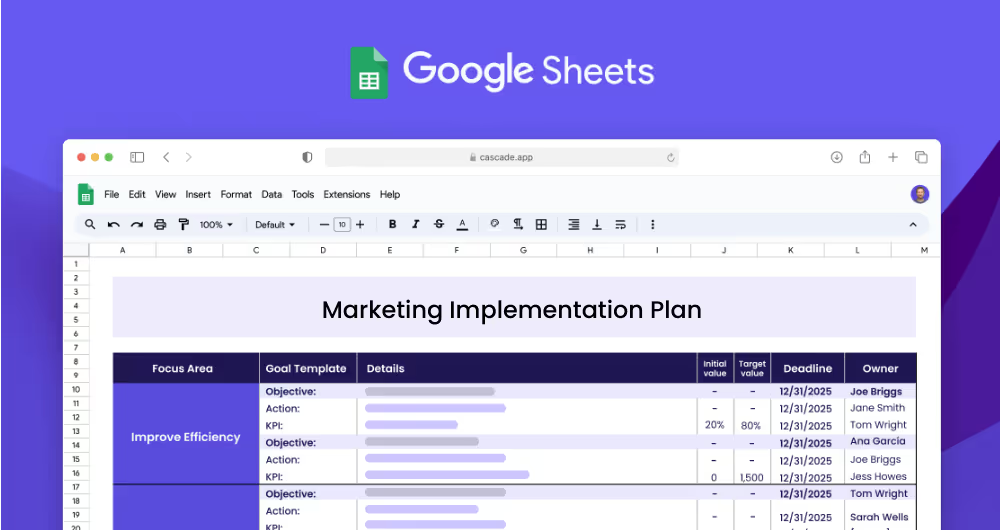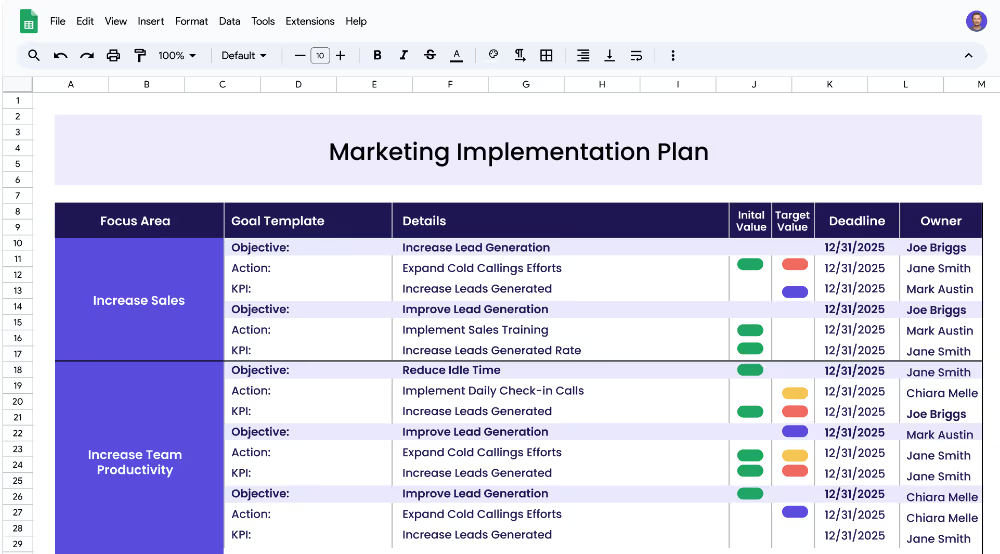A marketing implementation plan outlines the processes, goals, resources, and timeline of a marketing strategy. It is designed to serve as a road map for successful implementation and execution of marketing initiatives and campaigns. It helps to ensure that the desired goals are met, while ensuring that the resources are used efficiently and effectively.
Each focus area has its own objectives, projects, and KPIs to ensure that the strategy is comprehensive and effective.
The Marketing Implementation Plan template is designed for marketing teams in all industries who are looking to create a plan for the successful implementation and execution of their marketing strategies. This template provides a clear and concise structure to help teams organize their strategies, objectives, and tactics in a way that is easy to understand and follow.
The first step in creating a marketing implementation plan is to define the focus areas. Focus areas are the main areas of marketing that you want to focus on. Examples of strategic focus areas that could fall under a Marketing Implementation Plan could be: Increase Awareness of Brand , Increase Lead Generation, and Increase Customer Retention.
Once the focus areas have been defined, the next step is to think about the objectives that could fall under each focus area. Objectives are the specific goals that you want to achieve for each focus area. Examples of some objectives for the focus area of Increase Awareness of Brand could be: Increase Brand Visibility, and Increase Brand Engagement.
Once the objectives are defined, the next step is to set measurable targets, also known as KPIs (key performance indicators). KPIs are the measurable targets that you want to achieve in order to reach the objectives. Examples of KPIs could be increasing the number of website visits or increasing the number of shares on social media.
Once the KPIs have been set, the next step is to implement related projects in order to achieve the KPIs. Projects are the actionable items that need to be completed in order to reach the KPIs. Examples of projects could be launching an SEO campaign or developing engaging content.
If you’re ready to step up from basic spreadsheets and accelerate the execution of your strategies, consider transitioning to Cascade Strategy Execution Software. Unlike traditional methods, Cascade offers a dynamic environment with real-time updates and consolidated collaboration across all levels of planning and execution. Empower your teams with enhanced visibility through interactive dashboards that integrate planning and real-world execution seamlessly. Sign-up for free or book a demo and discover how Cascade can refine your strategic outcomes and expedite success.


